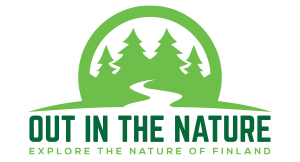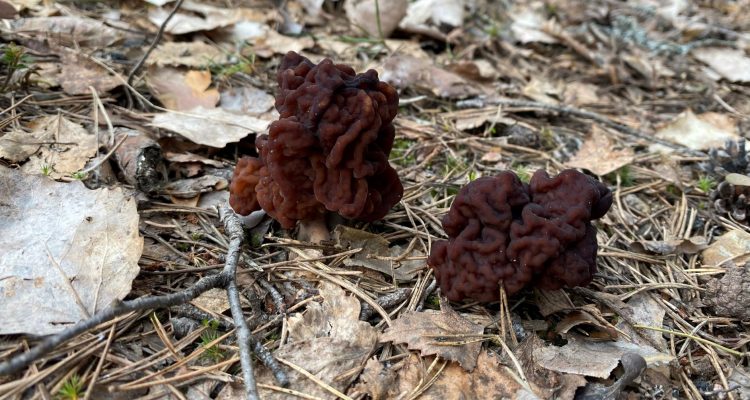Are you wondering what is the difference between true morels and false morels? Both of them are foraged in Finland and culinarily highly valued, but false morels are poisonous and have to be boiled twice before using. This is a small but very important difference, and if you are foraging morels in Finland, you have to be able to recognize them from one another. Both true morels and false morels look somewhat similar, but it would be easy to tell them apart if they were side by side.
The morels grow in spring, in Finland usually from late April to June. In Lapland they grow about a month later than in the south parts of the country. Both true morels and false morels are part of the same genus, Morchella. There are actually tens of different Morchella mushrooms. I compiled some basic information about them as mushroom madness has hit me again.
True morels are standing up like pinecones
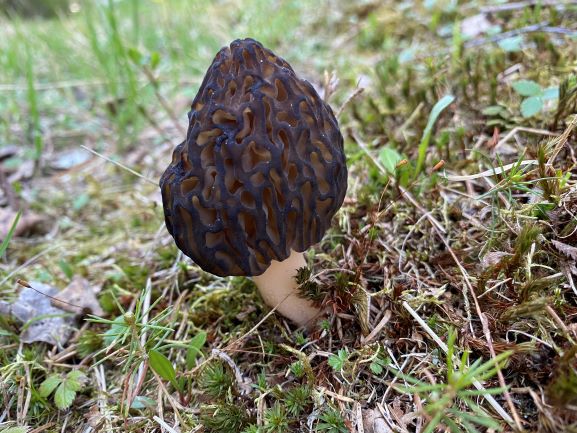
The true morel is known as huhtasieni in Finnish. Morchella elata is kartiohuhtasieni and Morchella esculenta is pallohuhtasieni. Their Finnish names actually tell a lot about their shape: kartio means cone and pallo means ball.
Mild in flavor, true morels are excellent mushrooms to eat. The true morels don’t have to be boiled before using, but they are recommended to be cooked. If eaten raw, true morels can cause minor stomach upset.
The true morels sometimes show up to yards and gardens as they seem to like wood chips and apples. They might also grow in forests that have burned down. The word huhta in their Finnish name actually means burned area. I don’t think they are easy to find, but once you find one, there might be many of them. They can be dried or frozen for later use, if you get lucky and find many of them at once.
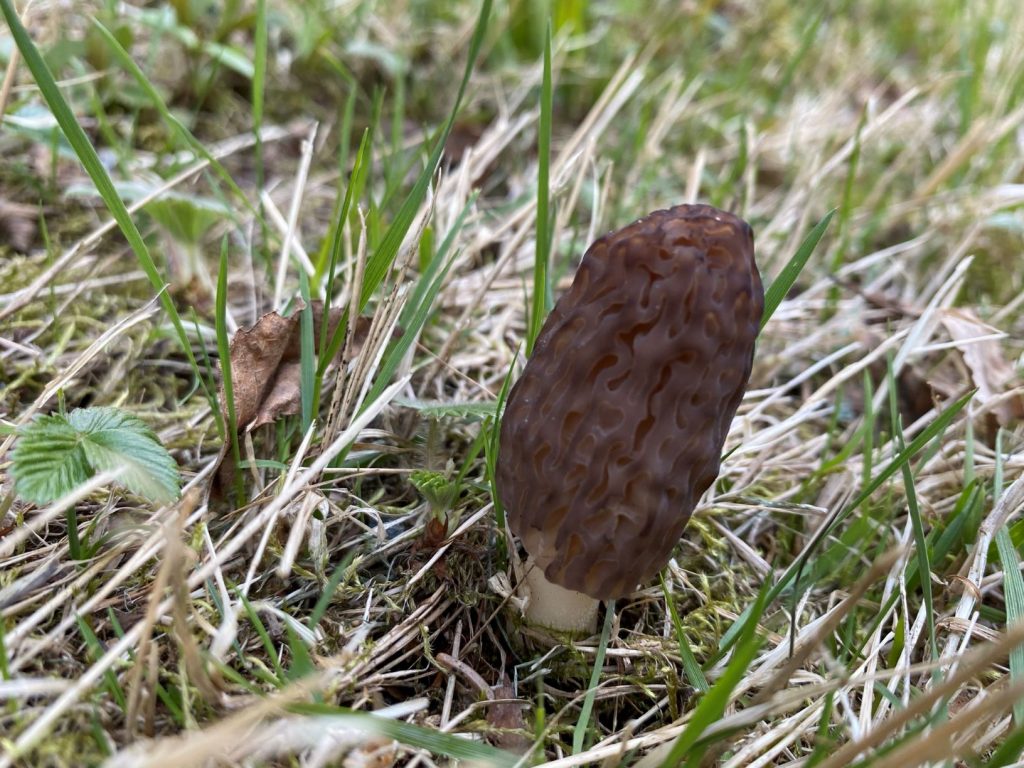
Main features of the true morels:
- True morels have a cap that is symmetrical or uniformly shaped, it looks kind of like a pinecone or ball
- Caps have pits and ridges in a honeycomb pattern
- Cap is 2-5 cm wide and 3–10 cm high
- Stem is attached at or near the bottom of the cap
- Cap is usually longer than the stem
- They are completely hollow inside
- Color can vary from light brown or yellowish brown to dark brown
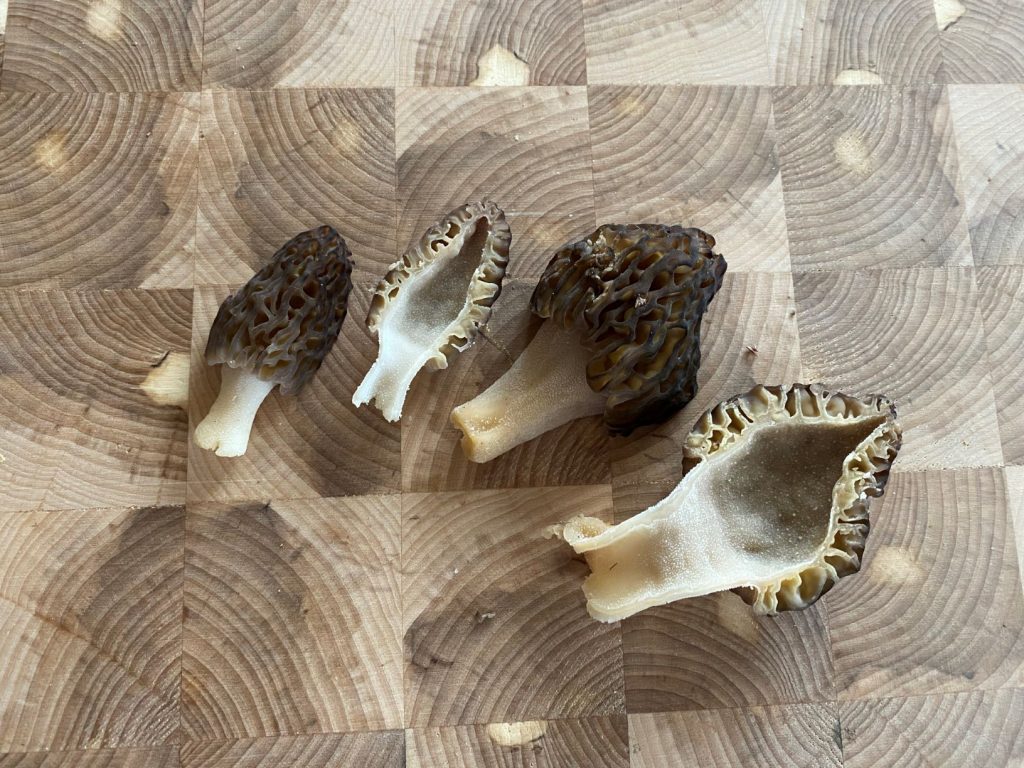
One lookalike to the true morel is Verpa bohemica, poimukellomörsky in Finnish. It has longer stem and wavy cap. Last year Sieniatlas was asking for sightings about them as they are pretty rare.
Poisonous false morel mushrooms reminisce brain
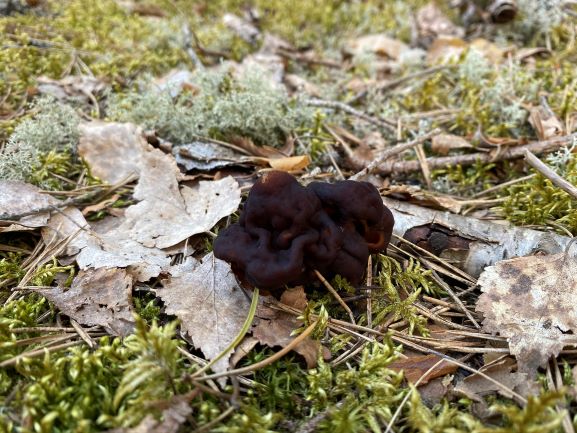
The false morels contain a toxin that can cause dizziness, vomiting, and in some cases even death. Incidents of poisoning usually occur when they are eaten in large quantities, inadequately cooked, or over several days in a row. The toxin is gyromitrin, an organic carcinogenic poison, that hydrolyzes in the body into monomethylhydrazine. While many mushroom guidebooks and websites highly recommend not to eat these mushrooms at all, in Finland they are a common edible mushroom with the right kind of preparation. Finnish food authority instructs boiling the mushrooms (1 part mushrooms, 3 parts water) twice for five minutes before using them in cooking. The common false morel, Gyromitra esculenta, is known as korvasieni in Finnish. It is common throughout the country and it loves sandy and moraine-based coniferous forests.
What does a false morel look like?
- Cap is wavy and folded
- Cap is uneven, it looks more like messy brain than pinecone
- Stem is joining at the top of the cap
- They grow close to the ground; you can’t really see the stem underneath them
- Inside can be hollow, or there can be some cottonlike fibers or even solid content
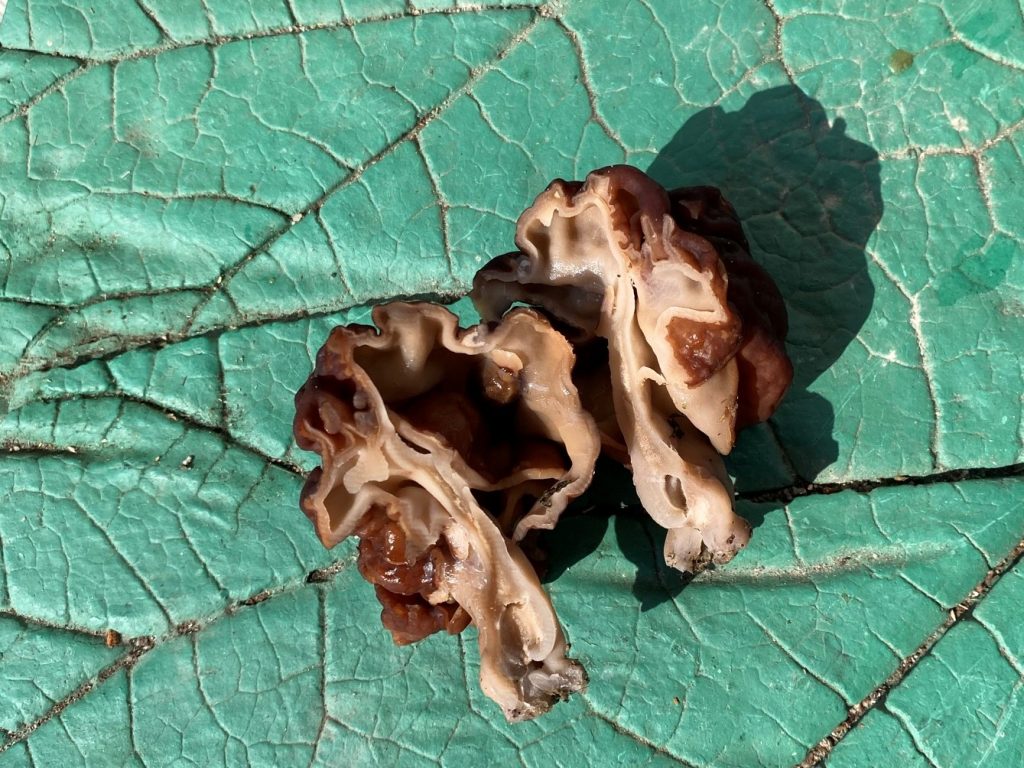
Another morel found in Finland is snow morel, Gyromitra gigas. It is lighter in color, rarer, and has to be treated the same way as false morel. Same goes for Gyromitra longipes and Gyromitra sphaerospora. Gyromitra infula and Gyromitra ambigua are false morel lookalikes, but they grow in autumn. They can also be eaten and have to be boiled well before consumption.
As usual, I would like to remind you not to eat any mushrooms based on what you have read here. Always make sure that you recognize the mushrooms you are going to eat, and that you know how to prepare them correctly. To be 100% sure, if you are not familiar with Finnish mushrooms, I recommend you to show your morels to an experienced mushroom forager before eating them.
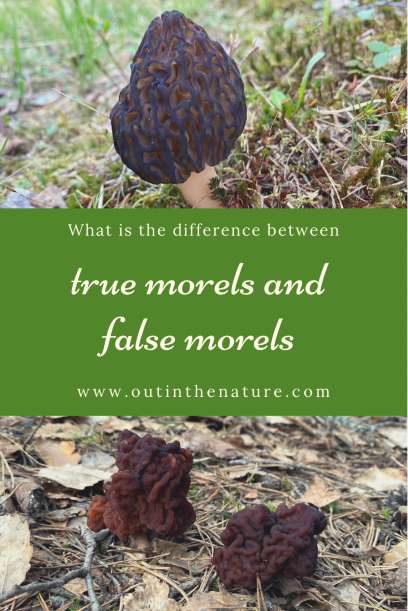
Recommended posts about mushrooms
- Foraging for the most common mushrooms in Finland
- How to tell chanterelle and false chanterelle apart
- How to identify different milkcaps in Finland
- How to identify edible boletes in Finland
- Watch out for the deadliest mushrooms in Finland
Fun mushroom quizzes
- Out in the Nature Quiz – How well do you know Finnish mushrooms?
- Out in the Nature Quiz – Another fun mushroom quiz
